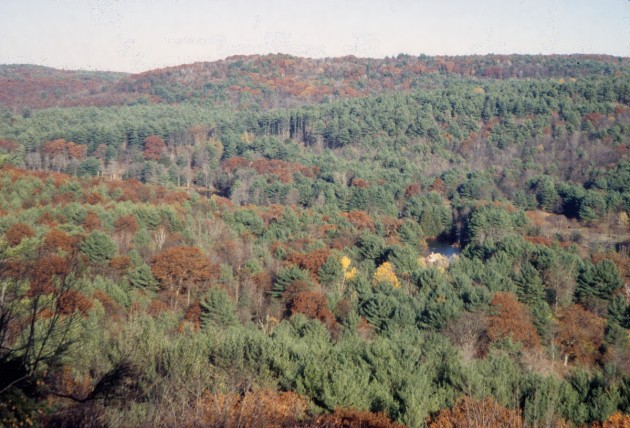In summer, you always know when a striped skunk has been around. But in winter, these animals make themselves scarce, hunkering down to wait out the onslaught of ice and snow.
Unlike most rodents and birds, which hoard food for the cold months, the striped skunk will have spent the fall eating as much as possible so it can stay warm during mid-winter dormancy. This binge eating creates thick layers of fat underneath the skin– a winter jacket, of sorts. The skunk metabolizes this fat during its dormant rests, though at a much slower rate than in summer.
Striped skunks use different den sites at different times of year, so their winter burrow will usually not be the same place where they raised their young. While capable of digging their own winter burrows, skunks are more inclined to seek residency in spaces that belong to someone else. For example, they find comfort underneath human-built porches or decks, a fact that some of us (and our noses) may be all-too-familiar with. Those skunks that live away from residential areas will often commandeer burrows dug and deserted by other outdoor dwellers, such as woodchucks or foxes.
Striped skunks—such as this little bunch discovered in the wilds of Alberta, Canada—are born into litters averaging four to seven kits. Babies can spray even before they open their eyes.
Striped skunks—such as this little bunch discovered in the wilds of Alberta, Canada—are born into litters averaging four to seven kits. Babies can spray even before they open their eyes.
Once colder temperatures set in, a skunk will prepare its den by blocking off the entrance to its burrow with leaves and grass to keep the cold air out. It isn’t uncommon for striped skunks to burrow with each other for extra warmth – these cohabitating skunks have the advantage of social thermoregulation, where they use each other to stay warm. Males sometimes den communally during winter, but are not tolerant of each other during other seasons.
Winter denning season in Vermont and New Hampshire typically runs from November through March, but this isn’t to say that skunks aren’t active during winter. Settled into its winter home, the striped skunk becomes dormant, but does not enter a full state of hibernation. Instead, skunks enter a state of torpor – a sort of deep sleep from which they awake from time to time. During torpor, which is influenced by the temperature and food availability, their body temperatures can drop 20degreesand their metabolism slows.
As the season changes from winter to spring, skunks will emerge and seek a mate. Striped skunks are a polygamous species and a male will take multiple mates over the course of late February through April; a female will only mate once. After breeding, both males and females seek to rebuild fat reserves, having lost, on average, about 30 percent of their body weight during winter. Females will establish maternity dens, sometimes communally. Males spend the warm months alone.
The arrival of spring brings not only warmer weather, but new food sources. The omnivorous skunk goes from a lean winter diet of carrion, fruit, and seeds to a summer diet rich in insects, small mammals, and sometimes our trash. As bee keepers are well aware, skunks have a fondness for bees and will consume honey, larvae, and adults.
The scientific name for the striped skunk is Mephitis mephitis, meaning “bad odor.”
The word “skunk” itself is one of the few Algonquin Indian words to enter the English language.
The word “skunk” itself is one of the few Algonquin Indian words to enter the English language.































